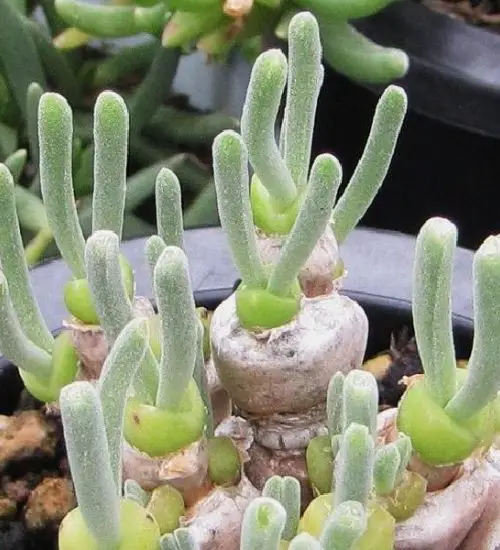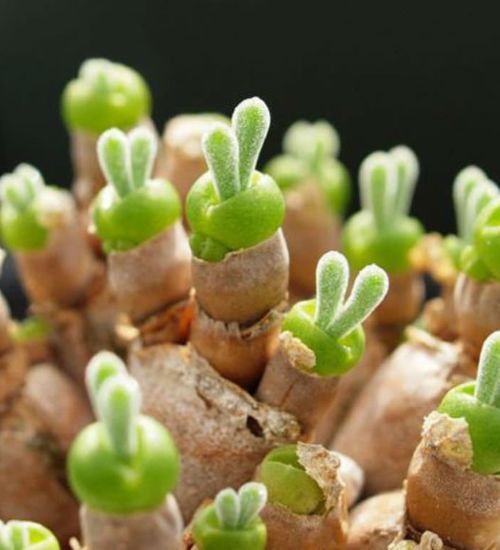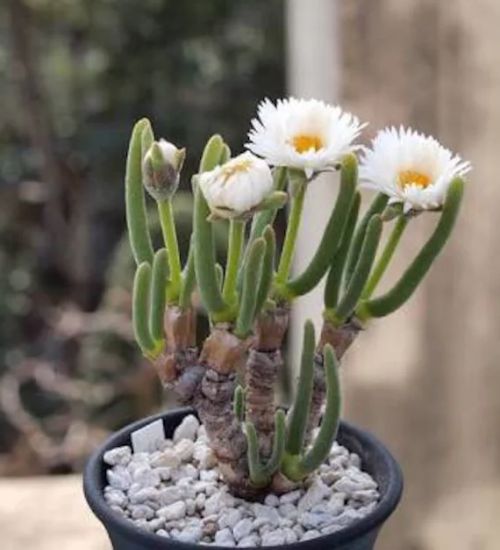Sun: full sun
Water: Typical water needs for a succulent
Temperature: Zone 10a from 30° F to 35° F (-1.1 ° C to 1.7° C) to Zone 11b from 45° F to 50° F (7.2° C to 10° C)
Winter Survival: Not cold hardy
Propagation:
Flower: in the Fall and Winter
Flower Type: Yellow, white
Toxic: Generally non-toxic to humans and animals
Dormant: winter
Space Requirement:
Common Problems:
Where to buy Monilaria Moniliformis?
Basc Care for Monilaria Moniliformis
Watering
Regular watering period should be every 2 weeks
One simple tip for you is that you can use some online apps to check the soil status before you go water your succulents. I would recommend the ThePlantsCheck app, it has some nice features there.
Fertilizing
Only feed this succulent during its active growing seasons which means winter. Use the right fertilizer applied in the right amounts. Applying half-strength balanced fertilizer every month or so is recommended for optimal results.
Do not fertilize during winter as the plant is dormant.
Sun & Location Requirements for "Bunny Succulent, Bunny Ear Succulent, String of Pearls, Beaded Vygie, Beaded Ice Plant"
As per this succulent profile, it is only able to stay healthy when the environment temperature is above the range of zone 10a from 30° F to 35° F (-1.1 ° C to 1.7° C).
When temperatures drop below freezing, it is important to take precautions to protect Monilaria Moniliformis from the cold. Insulating and providing adequate drainage for the plant are key elements in helping it survive winter weather. Wind and sun exposure should also be minimized to prevent frost damage.
Propagation
Toxicity

Monilaria Moniliformis is generally non-toxic to humans and animals. However, it is important to be aware that certain parts of the plant may contain toxins which can cause mild skin irritation. It is advised that you keep the plants away from small children or pets, as they may unknowingly ingest them and suffer ill effects.


